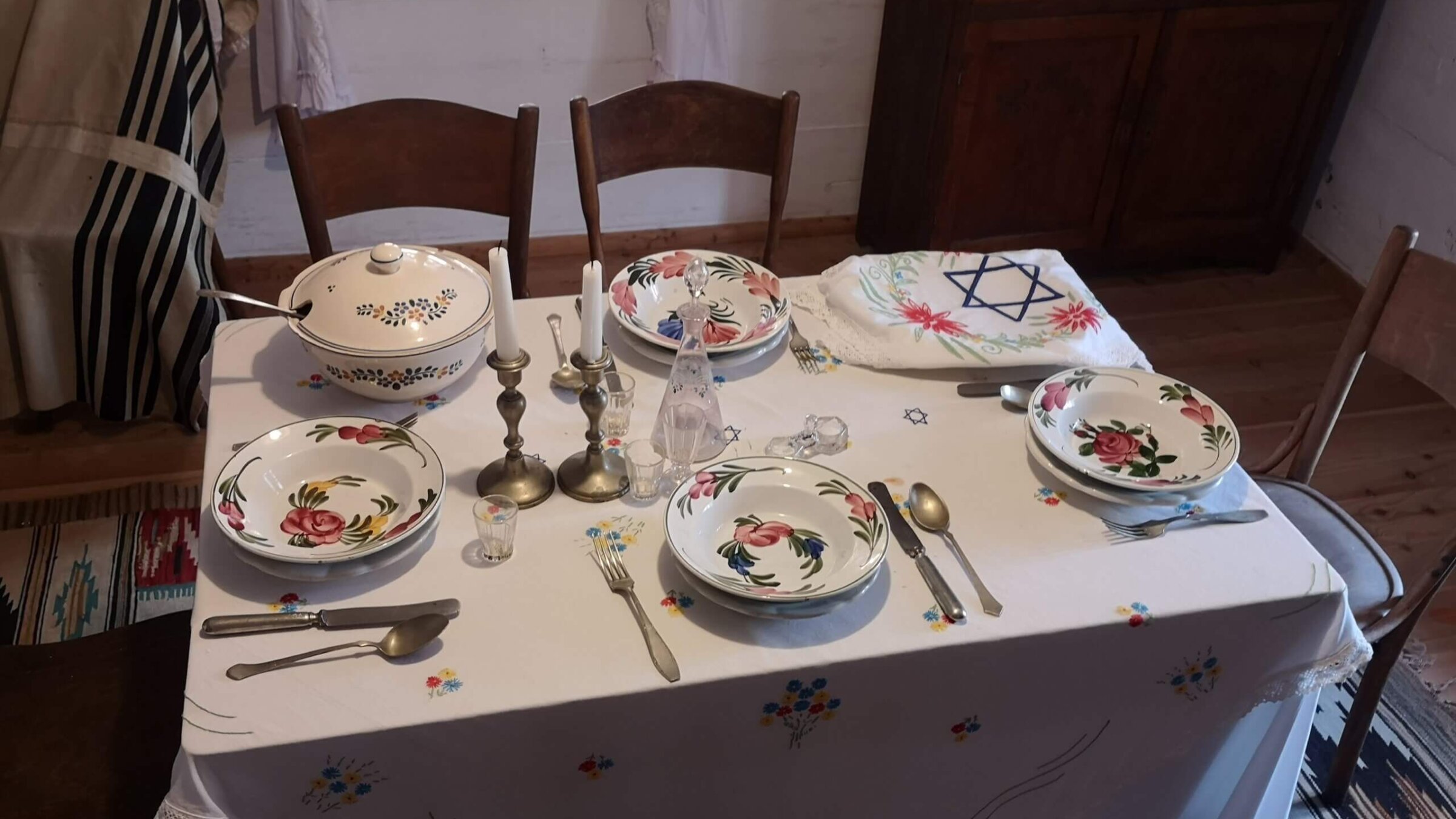Yiddish Shabbos songs to sing while sipping your glass of tea
Most Jews end the Sabbath meal with Hebrew or Aramaic hymns, but there are some wonderful Yiddish ones, too

Photo by Wikimedia Commons
After a packed, overly scheduled workweek, I love the slow, relaxed tempo of Friday night Shabbos dinner with my family and friends.
What makes it stand out are not only the delightful tastes and aromas of the roast chicken and delectable side dishes, but the singing. As the meal winds down and we each nibble from our slice of homemade cake with a glezl tey (a glass of tea, the way our East European ancestors drank it), we open up our benchers, or prayer booklets, and begin singing Shabbos songs.
Called zemirot or zmires, these songs are usually religious poems in Hebrew or Aramaic written between the 10th and 17th centuries. But there is also a whole genre of Yiddish zmires. This isn’t surprising, considering that the Jews from Eastern Europe have been speaking Yiddish for more than a millennium.
So I thought it might be fun to share several of these Yiddish Shabbos songs with our readers. Who knows? They just might inspire you to introduce these songs to your own friends and family.
‘Hobn mir a nigndl’ (We have a song)
This is one of my favorites. The melody is so upbeat and catchy that even people who don’t know the words can enjoy it, by humming along and beating gently on the table.
The lyrics evoke the importance of family traditions, of one generation passing on its music to the next, as you can see from the first two lines:
There’s a melody we sing together that sounds so beautiful. Our grandparents sang this song when they were children…
The text and melody are by Nokhem Sternheim, a folk poet from Galicia who was killed by the Nazis in 1942. Like the work of two other Yiddish songwriters, Mark Warshawsky and Mordkhe Gebirtig, Sternheim’s “Hobn mir a nigndl” is often mistaken for an anonymous folk song because of its down-to-earth quality. Here it is sung by Robyn Helzner:
‘Volt ikh gehat koyekh’ (If I had the strength)
My sister Eydl lives in Tzvat, the city in Israel known as the birthplace of Jewish mysticism. When I walk from the synagogue to my sister’s house on a Friday night, winding my way through narrow cobblestone streets and stone houses hundreds of years old, I feel the sacred history of that place. That’s when this evocative song, “Ven ikh volt gehat koyakh,” comes to mind:
If I had strength, I’d run through the streets and sing loudly: “Shabbos, holy Shabbos, the day devoted to the Lord!”
Below is a recording produced by Chabad Rabbi and musician Sholom Horowitz (and here are the lyrics, with some minor differences):
In the 1990s, the iconic Yiddish soprano and activist Adrienne Cooper (1946 — 2011) created slightly new lyrics for the song, turning it into a call for peace and justice in the world.
If I had strength, I’d run through the streets and yell out: “Peace, peace, peace…”
Here is Cooper singing it, accompanied on the piano by the director of the Folksbiene National Yiddish Theater, Zalmen Mlotek, during a Purim concert in St. Petersburg, Russia in March 2003 (lyrics):
‘Zol zayn Shabbos’ (May there be Shabbos)
This anonymous folk song, performed here by actor, singer and activist Theodore Bikel, was frequently taught in Yiddish afternoon schools and summer camps because it’s so easy to learn. It has few words, lots of repetitions and the chorus is a niggun, a melody with no words at all:
Let there be Shabbos all over the world
Let there be a holiday celebration all over the world
Let there be peace all over the world.
Who can argue with that?
‘Brider, Zog’ (Tell Me, Brother)
Here is a Hasidic Shabbos song that also sounds like an anonymous folk song, but in fact, we know the author: the 19th-century Yiddish poet Sholem Berenshteyn. Among the few details written about him is that he lived in Kamenetz-Podolsk, Ukraine, and died before 1880.
The Sabbath arrives, be happy all you children!
Dance children, each on his own, in honor of the holy bride.
In this recording, posted on Jewish folklore expert Itzik Gottesman’s blog, Yiddish Song of the Week, the unidentified woman performing it doesn’t sing it like a folk song, but rather as an art song, much the way that the well-known soprano Masha Benya used to do when singing popular Yiddish and Hebrew folk songs.
‘Dos Shabes Lid’ (The Shabbos Song)
Here is a more learned kind of Hasidic folk song, interlaced with Hebrew and Aramaic quotations from the Torah, Talmud, Jewish liturgy and other religious texts. As klezmer musician and scholar Michael Alpert writes in Yiddish Song of the Week, these songs are “a kind of Ashkenazic gospel song or spiritual, summoning forth and embodying an atmosphere of deep contemplation and mystical transcendence.”
Popular in many Hasidic communities of Hungarian and Carpathian descent, “Dos shabes lid” is a classic example of a religious Yiddish folk song, Alpert writes. “It is in many respects a quasi-balladic paean to the intricacies and pleasures of traditional Shabes observance and the interweaving of spiritual exaltation, mystical devotion, traditional cuisine, home and family, sacred time and the repose from the cares of the week it can bring.”
Listen to how the traditional Yiddish singer and lay prayer leader Avrum Yitshkhok Moskovitz performs it.

















